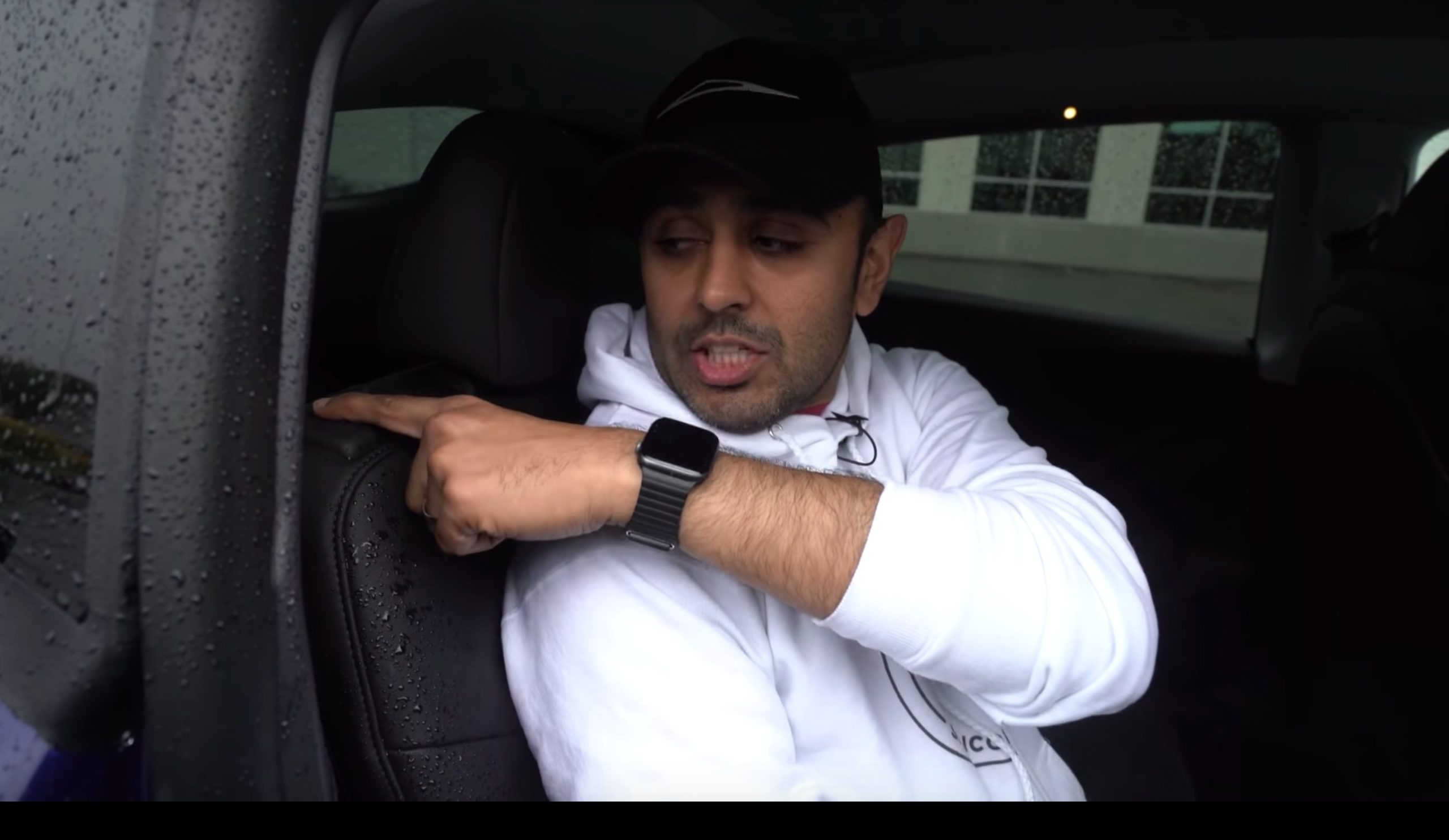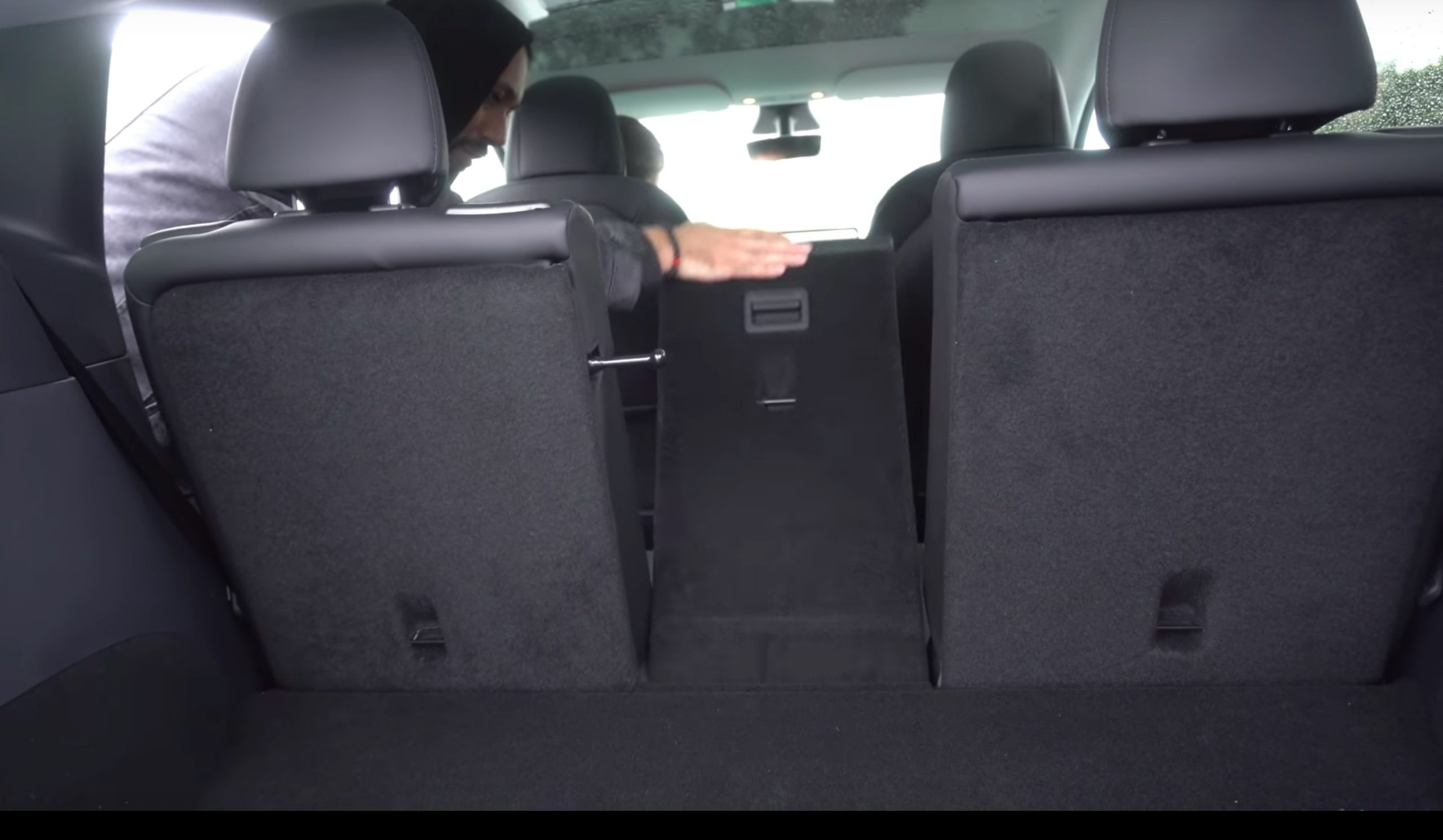There’s been a lot of questions circulating on whether Tesla Model Y’s second-row rear seats can recline, but we now learn that it does, plus much more than we expected.
Tesla Model Y is, by many accounts, similar to its first mass-market sedan: the Model 3. With 75% of its design derived from Model 3, Tesla’s first all-electric crossover also seats five adults, with a seven-seat option coming later, but boasts a 15% improvement in rear legroom and a whopping 440% improvement in cargo space. In addition, Tesla has implemented several highly sought after improvements to Model Y, including adjustable rear seats.
Despite not being highlighted in the Tesla’s Owner’s Manual, Model Y rear seats can, in fact, recline to three separate positions by way of a button that’s located inside the upper seat adjustment latch for each outboard rear seat. Tesla owner and YouTuber Tesla Raj details this in his in-depth video review of the Model Y.
“One unique feature of the Model Y is that the rear seats actually recline. Not only do they fold down, they recline,” notes Raj in his demonstration of the three recline positions.

How to recline Tesla Model Y rear seats
Depressing the button inside the rear seat adjustment latch will activate the motorized latching mechanism and recline the seat to the next available position. Pressing the button one time again will recline the rear seat once more. Rear passengers can also hold down the button to recline from the first available upright position to the lowest recline setting.
Model Y rear seats are spring-loaded and can incline by following the reverse procedure. When fully reclined, passengers can tap the button inside the rear seat adjustment latch to incline one position or depress the button to raise the seat to the most upright position.
Model Y Middle Rear Seat
The rear center seat in the Model Y also doubles as an armrest for rear-seat passengers when partially folded down. Inside the armrest are cupholders.
Unique to the Tesla Model Y when compared to Model 3 is a cargo passthrough. Model Y’s middle rear seat can be folded completely down to create a passthrough for stowing sporting equipment like skis and other long cargo. Lowering the middle rear seat can be achieved by pulling on the latch that’s located on the back of the middle seat.

Being able to fold down Model Y’s rear middle seat adds a nice convenience to the crossover’s utility, however, one can’t overlook the support post that protrudes from the left rear passenger seat.
“I will call out that there’s nubbin’ that sticks out. It’s not retractable. It’s always there. Kinda’ comes in the way if you’re using the passthrough,” points out Raj in his hands-on review of the Model Y.
All-in-all, the spaciousness of Tesla Model Y’s rear seat and the trunk is an undeniable strength of the company’s first mass-market crossover. Priced competitively around $50,000 to start, Model Y catapults itself into the crossover market to become a catalyst that will spark an industry-wide change to electrification among one of legacy auto’s most lucrative category.
Check out Tesla Raj’s in-depth review of the Tesla Model Y below.
[embedded content]

<!–
–>

